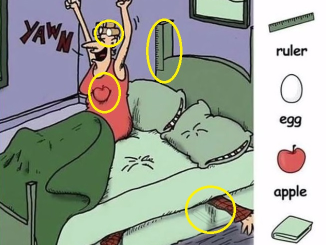
An orphan colt whose mother died shortly after giving birth has a new mom – a mare that had tragically lost her foal – thanks to the generosity of strangers and Washington State University veterinarians playing matchmaker.
Pairing an orphan foal and a nursing mare is a challenging task and one that commonly ends with failure. In this case, the connection was instantaneous.
“The mare had only been without a foal for about 24 hours,” Dr. Lisbeth Matthews, an equine medicine and surgery intern, said. “We walked her into the Veterinary Teaching Hospital and past him. He made a noise, and she went, ‘oh, there’s my foal,’ and started making noises back at him.”
It was a surprise to everyone how quickly the mare, named Shelly but affectionally called Mama by her owners, Roy and Faye Lions, accepted the colt. Equine veterinarian Jenifer Gold, who was helping to care for the foal and to supervise its introduction to the mare, said nursing mares frequently reject orphan foals, and when they don’t, the pairing process often takes days.
“She walked in and started nickering at him like it was her own baby – it was unbelievable,” Gold said. “I’ve been doing this for 20 years, and I have never seen it happen that way.”
The foal, which has been named Laredo, was admitted to the teaching hospital by his owner, Spokane resident Rachel Williams, just days after he was born when he started showing troubling digestive issues. Shortly after the colt arrived in Pullman, Faye Lions placed a call to WSU to see if the equine team was aware of any orphan colts needing a nursing mare.
“Our foal was dead, and nothing was going to bring it back, so we were hoping we could help someone else,” Faye Lions said. “It just so happened there was a foal there.”
A day later, the colt and Shelly were introduced.
“For them to be so willing to basically hand over their animal to a complete stranger after experiencing their own tragedy was pretty phenomenal,” Williams said. “I feel like in this scenario it was the worst of the worst for everybody, but there was a little bit of silver lining to the story.”
Williams is also grateful for the care and treatment she and her foal received at WSU.
“I just can’t even find words to say how great the veterinarians at WSU were,” she said. “They went above and beyond. I am just happy I ended up at WSU. I am so glad we were able to match those two up – it is kind of a miracle.”
Shelly will live with Williams until the colt is ready to be weaned, likely in six months, before she will return to her home in Kamiah, Idaho.
“It will be tough to say goodbye because you just naturally start to bond with animals, and she has kind of been my lifesaver,” Williams said. “It will be bittersweet for sure, but I am sure her owners will be happy to have her back.”
During the spring, the equine team at WSU typically sees at least a handful of orphan foals. Equine medicine specialist Dr. Macarena Sanz said orphan foals can be fed a powdered milk formula designed for horses, but those raised by humans typically develop behavioral issues that can become problematic as the animal matures.
“They turn out to be socially weird, have no understanding of personal space, and they are more difficult to train,” WSU equine veterinarian Macarena Sanz said. “The fact that this orphan foal has a mare is really going to make a difference.”
Sanz strongly encourages owners to immediately call their veterinarian if a foal is orphaned, as early care is critical to the animal’s survival.
Can You Spot the Hidden Figure?
Optical illusions have fascinated people for centuries, giving us glimpses into the hidden world of perception. Our brains can be tricked by images, leading us to see things that aren’t there—or miss things that are. One such riddle has recently captured attention: Can you spot Jesus in this busy marketplace scene?
Let’s dive into the illusion and break it down for a moment of fun and critical thinking.
The Scene: A Bustling Marketplace

At first glance, the image seems like an ordinary scene. It shows a busy marketplace with vibrant stalls filled with fresh produce and a crowd of people walking through it. The various tents, colorful fruits, and individuals walking around all blend together to create a lively, realistic atmosphere. But wait—look closely. There’s something hidden in plain sight that you might miss at first. This is where the optical illusion kicks in.
The Hidden Figure: Jesus in the Marketplace
So, where exactly is Jesus? The trick behind this optical illusion is that the figure you’re looking for doesn’t appear in a traditional, obvious manner. Instead, it’s subtly blended into the scene.
If you closely examine the crowd in the image, particularly focusing on the layout of the people and their clothing, you might notice a figure emerging from the sea of shoppers. The illusion is designed to make you think harder—much like a riddle that asks you to spot something out of the ordinary.
The figure of Jesus, in this case, isn’t just a normal addition to the crowd. The trick is that the shape, the pose, and the style of clothing of one of the figures mimic the classic artistic representations of Jesus Christ. His robes, facial expression, and posture resemble iconic images that have been ingrained in our culture over the years. But the illusion lies in the way these elements are arranged—hidden in the form of a busy marketplace, making the figure blend seamlessly with the crowd.
Why Is It So Hard to Spot Jesus?
The challenge in spotting this figure is due to a few psychological and perceptual factors:
Video : Jesus Optical Illusion
- Pattern Recognition: Our brains are trained to pick up patterns, so when looking at a crowded image like this, we are automatically drawn to recognizable shapes and figures. But the mind can also deceive us, especially when subtle clues are used, leading us to overlook the hidden figure.
- The Power of Suggestion: The riddle challenges us by planting the idea that Jesus is hidden somewhere in the image. This suggestion primes our brains to look for familiar features—like robes or a certain pose—but this often makes us miss other, less obvious cues.
- Crowded Spaces and Visual Overload: The marketplace is a busy environment, and our brains tend to filter out information that doesn’t seem relevant at first glance. This overload of visual stimuli makes it difficult to focus on one small detail, which is exactly what makes optical illusions so effective.
How to Find Jesus in the Marketplace
Now that we’ve set the stage, let’s talk about how you can crack this illusion:
- Look for Distinct Clothing: Start by focusing on the clothing of the people in the marketplace. Jesus is often depicted wearing robes and sandals. Look for someone who has a similar color palette and draped garments.
- Focus on the Shape: Jesus is often represented with his arms in certain positions, such as holding them in a prayer or open posture. Notice how the body positions of the figures in the crowd align with these common depictions.
- Check the Facial Features: While the face of the hidden figure might not be fully visible or clear, look for a face that matches the traditional portrayal of Jesus—like a serene or peaceful expression.
- Don’t Rush: It’s easy to miss the hidden figure if you’re rushing through the image. Take your time and examine the details carefully.
The Fun of Optical Illusions
This optical illusion is more than just a fun riddle—it’s a reminder of how our brains work. By playing with patterns and perception, these illusions challenge us to look beyond the obvious and examine details that we might otherwise overlook.
It’s fascinating how a simple image can trick our minds into seeing something entirely different, showing how complex and powerful our perception can be. As you work through this riddle and other optical illusions, you’ll start to appreciate just how easily our minds can be led astray by visual tricks.
Why We Love Optical Illusions
Optical illusions have always been a source of fascination for people. They offer an opportunity to engage our minds in a playful, yet thought-provoking way. Whether it’s spotting hidden figures, deciphering patterns, or simply enjoying the challenge of seeing things that aren’t immediately obvious, optical illusions have a way of making us question the very nature of reality.
They also serve as a form of entertainment, particularly in the age of social media, where users love to share mind-bending puzzles like this one. They encourage interaction, as people challenge their friends and family to solve the riddle and share their answers. It’s a fun way to keep the brain sharp and entertained, all while sparking curiosity about how our minds process the world around us.
Video : Can You See It !?! 🧐
The Final Reveal
So, did you find Jesus in the marketplace? If you looked closely and examined the details carefully, you’ll see that the figure blends seamlessly into the crowd, and the clothing and posture suggest the iconic representation of Jesus. It’s a subtle illusion designed to make you think critically and appreciate the power of perception.
Remember, optical illusions aren’t just about finding the answer—they’re about training your brain to think in different ways, to question assumptions, and to enjoy the process of discovery.
Conclusion: Embrace the Challenge
Whether you cracked the illusion right away or had to take a moment to find it, the real value of this riddle lies in how it stretches your perception. Optical illusions are more than just a source of entertainment—they help sharpen your observational skills and challenge the way you see the world. So, next time you come across a riddle or illusion, take a deep breath, trust your instincts, and enjoy the process of discovery!
Share this riddle with your friends and challenge them to spot Jesus in the crowd. See who can think critically and solve the puzzle first! And don’t forget—sometimes the answers to life’s greatest challenges are hiding right under our noses.



Leave a Reply